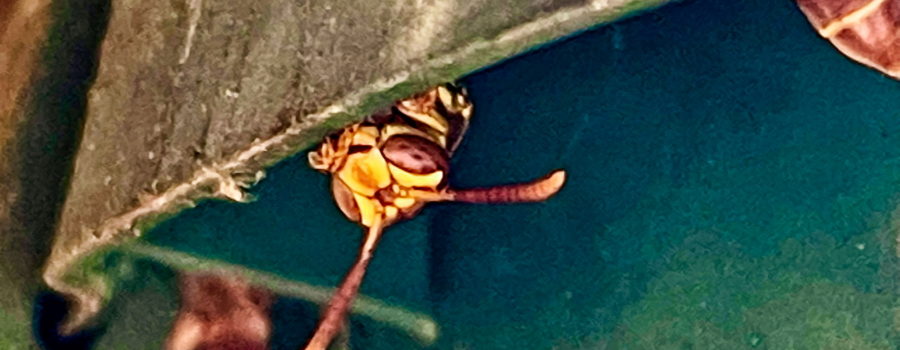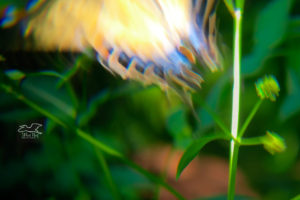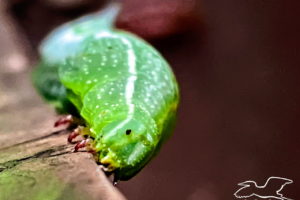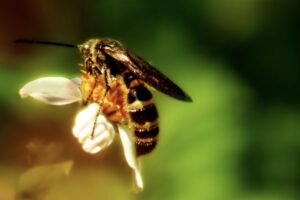Paper Wasps Have a Very Interesting Social Structure and Lifestyle

During the summer months the insect world is so lively and vibrant it’s hard to even begin to keep up with everything that’s going on, even on my little eight acres. As fall begins, things definitely slow down and many of our insects disappear either into hibernation, a chrysalis, or some other dormant form. These dormant forms are usually much better able to withstand the cooler weather, shorter days, and shortage of food sources that come with the onset of winter. All summer and fall I watched a small colony of paper wasps (Polistes exclamans) build their nest, collect food and feed their larvae, and work tirelessly at pollinating the local wildflowers. Then one day in the late fall, the nest was empty. No more wasps flying around or buzzing in and out of the cells feeding the larvae. In fact, no more larvae! Then about a month ago, I spotted a bunch of them underneath the lip of a plant pot that hangs on the porch. They seemed to be moving around, but not flying in and out of the area, and they were not nearly as active as they had been in the summer.

I’ve been watching them since I first spotted them in December, and very little has changed except their activity level. Today, they are barely moving at all, even when I gently nudge the pot. They are all tucked up under that lip and huddled together, I’m assuming for warmth. Tonight we are supposed to have a cold snap moving through, and may even get another light frost. I’m now realizing that these are a group of next years queens who are hibernating through the winter. Come spring, they will leave and head out to establish new colonies. It looks to me that there are between 30-50 individuals, which were basically part of the last generation of larvae produced by the colony on my porch. The other part of that generation would be reproductive males. All of them left that nest and searched out mates. Probably around the time of our first frost, the males died and the females found sheltered areas in which to hibernate. Other places you may find hibernating female paper wasps include cracks in walls, under loose tree bark, in holes in trees, or any other small, protected places. These groups of hibernating wasps are referred to as hibernacula.

Not all of the females in the hibernacula will survive until spring, but those that do will head off when things warm up and start new colonies. They will build a small nest of chewed plant stems and wood fibers arranged in cells. The queen will lay a fertilized egg in each cell. These will become the first generation of workers. These workers will expand the size of the nest and provide food for the developing larvae, leaving the queen free to lay more eggs. As the colony grows, the workers will form a hierarchy with the younger ones becoming foragers while older workers will stay with the nest and feed and care for the eggs and larvae. Interestingly, any one of these female workers has the capability to become a queen if something were to happen to the current queen. Again, this choice is made mainly based on age, so it’s usually the oldest female that becomes the new queen if one is necessary. This is somewhat different from how many of the other social insects replace a queen.

I’m going to continue to monitor my little hibernaculum and hope that some of them survive the winter. Assuming that they do, I’m curious to see when they decide to disperse to look for good nesting sites. I’m sure that some of them will choose areas here on this property. Unless they are right beside a door or window, I try to leave paper wasps alone. They are really great pollinators and they also hunt quite a few pest insects like flies, mosquitoes, beetles, and moth caterpillars. Although I do like my caterpillars, too many of them can be devastating to the native plants. The paper wasps are very important for keeping the whole system in balance. And besides, unless you try to harm them or threaten the nest, paper wasps are pretty nonaggressive.
If you enjoy beautiful nature photography and nature inspired artwork along with interesting and engaging nature and animal related content, then this is the blog for you! Join us and see for yourself!





Recent Comments